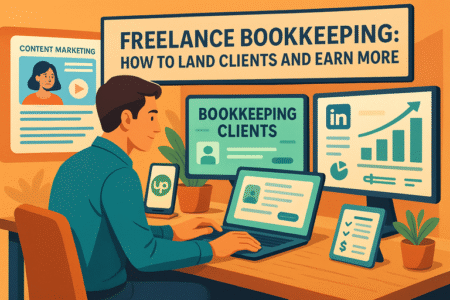Table of Contents
Finding the right writer for hire can feel like hunting for treasure in a digital jungle—so many promises, so few results. You want high-quality content that sounds authentic, ranks well, and doesn’t leave you drowning in edits or deadlines.
What if you could finally delegate your content needs without the stress or uncertainty that usually comes with outsourcing?
In this guide, you’ll learn exactly how to get reliable, top-tier writing help that feels seamless and actually works for your business.
Why Hiring a Professional Writer Saves You Time and Stress
Working with a writer for hire is like handing over your to-do list to someone who’s already done it a hundred times before.
You save hours every week, avoid creative burnout, and get professional-quality content that supports your business goals—without the stress of writing it all yourself.
How a Writer for Hire Streamlines Your Workflow
When you bring in a professional writer, your content process becomes predictable instead of chaotic. I’ve seen business owners go from spending ten hours drafting a single blog post to spending just ten minutes reviewing a finished draft.
Here’s how it usually works:
- You brief them once — A professional writer knows how to take a short brief (goals, tone, and key topics) and transform it into structured, engaging content.
- They handle the research — Instead of spending your time Googling, your writer pulls facts, stats, and credible sources to strengthen the message.
- They meet deadlines — You get consistent delivery without the last-minute scramble.
In short, you stop being stuck in content limbo and start publishing regularly with confidence.
The Real Cost of Doing All Your Writing Yourself
At first glance, writing your own content looks “free.” But when you factor in the value of your time, it’s actually expensive.
If your hourly rate is $100 and it takes you 5 hours to write one article, that’s $500 of your time—before even considering editing, keyword research, or formatting. Multiply that by 4–8 posts a month, and you’ll quickly see that DIY writing is eating into your productivity and profit.
Hiring a writer for hire frees you to focus on higher-value work—like strategy, sales, or client relationships—while still getting polished, optimized content.
When Outsourcing Becomes More Efficient Than DIY
Outsourcing is most efficient when content volume grows beyond what one person can realistically manage. For example:
- You’re posting weekly blogs and social content but falling behind.
- You need consistent updates for multiple platforms.
- You’re scaling your brand or entering new markets.
That’s when a writer for hire becomes your secret weapon. They help you maintain content consistency while you handle the bigger picture.
I often advise clients to start small—hire for one recurring task (like blogs or newsletters)—and then scale as trust builds.
Balancing Creativity and Consistency With a Professional
One of the underrated benefits of hiring a professional writer is how they balance your voice with content consistency.
You provide the creative spark—the ideas, the stories, the personality. Your writer translates that into structured, SEO-friendly pieces that stay true to your tone.
I suggest sharing brand materials, tone examples, and feedback on the first few projects. Once the rhythm is established, you’ll be amazed at how seamless the collaboration feels.
What to Look for When Choosing a Writer for Hire
Not all writers are created equal. The right one will feel like an extension of your team—someone who gets your voice, your audience, and your goals.
Evaluating Writing Style and Voice Compatibility
Before hiring, read a writer’s portfolio and ask yourself: Would this sound natural under my brand name?
A good writer for hire can adapt their tone—whether you want friendly and conversational or technical and authoritative. I often recommend doing a small paid test project first. It’s the best way to gauge whether their writing style matches your expectations.
Checking Portfolios for Niche Expertise
Experience matters—especially in specialized industries. For instance, a SaaS content writer understands user onboarding terms like “churn rate” and “user activation,” while a health writer knows the difference between clinical tone and lifestyle voice.
Look for samples in your niche, not just general blogs. A strong niche portfolio signals efficiency, accuracy, and fewer rounds of revision.
Understanding Rates, Contracts, and Deliverables
Pricing for a writer for hire varies based on experience, content type, and turnaround time. But transparency is key.
I suggest clarifying the following upfront:
- Rate structure: Per word, per project, or retainer model.
- Deliverables: Number of revisions, SEO optimization, or keyword inclusion.
- Deadlines: When to expect drafts and final versions.
- Ownership: You should own full rights once payment is made.
Clear agreements prevent surprises and set the tone for professional collaboration.
How to Spot Red Flags Before You Commit
Not every freelancer is reliable. Here are some warning signs:
- Vague or inconsistent communication.
- Unwillingness to provide samples or references.
- Overpromising turnaround times (like 10 blog posts overnight).
- No clarity on revisions or scope.
If something feels off during early communication, trust your instincts. A dependable writer for hire values long-term relationships, not quick wins.
Types of Writers for Hire and Which One You Need
Different writing goals require different specialists. Choosing the right type of writer ensures your investment translates into measurable results—whether it’s sales, SEO rankings, or brand authority.
Content Writers vs. Copywriters: Key Differences
Here’s a simple way to think about it:
- Content writers inform and engage. They create blogs, articles, and guides that build trust over time.
- Copywriters persuade and convert. They write ads, landing pages, and sales copy designed to get immediate action.
If your goal is traffic and brand trust, go for a content writer. If you’re focused on sales and conversions, a copywriter is your best bet.
SEO Writers Who Help You Rank Higher
An SEO writer blends storytelling with search strategy. They know how to:
- Use focus keywords naturally.
- Optimize meta titles, headings, and internal links.
- Maintain readability while satisfying Google’s algorithm.
For example, if you run an online store, an SEO writer ensures your product pages are keyword-optimized and compelling for shoppers. I’ve seen businesses double their organic traffic within months just by investing in consistent SEO writing.
Ghostwriters for Blogs, Books, and Brand Authority
A ghostwriter writes under your name. They’re ideal for founders, coaches, or thought leaders who want to share expertise but lack time.
Imagine dictating your ideas over a quick Zoom call and getting a fully formatted post or chapter ready to publish. That’s the power of ghostwriting—it gives you authority without the workload.
Just make sure you establish confidentiality and ownership rights in writing before starting.
Technical and Industry-Specific Writers for Complex Topics
If your business involves complex products—like fintech, engineering, or healthcare—you need a technical writer.
They turn jargon-heavy concepts into easy-to-understand explanations without losing accuracy. For example, a cloud computing company might need documentation that translates “API integrations” into user-friendly guides.
In my experience, these writers often have backgrounds in the industries they cover, so they bring both clarity and credibility to the table.
Expert Tip: When hiring a writer for hire, don’t just look for writing skill—look for business alignment. The best writers think strategically, understand your market, and deliver content that builds your brand over time.
How to Communicate Effectively With Your Hired Writer
Even the most talented writer for hire can’t read your mind. Clear, consistent communication ensures that the content they create matches your tone, message, and goals—without endless revisions.
I’ve learned that most content frustrations don’t come from bad writing, but from unclear direction.
Setting Clear Expectations From the Start
Before your writer types a single word, it’s crucial to outline what success looks like. That means defining your goals, deliverables, and timelines upfront.
Here’s how to do it:
- Define your objective: Do you want to educate, rank higher on Google, or convert readers? Tell your writer.
- Clarify deliverables: Be specific about word count, number of sections, and tone (e.g., conversational, expert, storytelling).
- Agree on deadlines: Always build in time for revisions, especially if multiple stakeholders are involved.
I suggest putting all of this in a shared document (like Google Docs or Notion) where both of you can refer back. It keeps expectations transparent and reduces back-and-forth messages later.
The Importance of Creative Briefs and Brand Guidelines
A creative brief is the roadmap for your writer. It tells them where to go and how to get there. I’ve seen clients skip this step and end up with content that technically fits the topic—but doesn’t sound like their brand.
Your brief should include:
- Tone and voice: For example, “friendly but authoritative” or “data-driven and concise.”
- Target audience: Who are you speaking to? What do they care about?
- Formatting preferences: Do you want numbered lists, subheadings, or a storytelling intro?
- SEO direction: Focus keyword, related terms, and meta description guidelines.
If you already have brand guidelines, share them. They’re like a style compass that keeps your content consistent even if you work with multiple writers.
Giving Constructive Feedback Without Micromanaging
Feedback is essential, but micromanaging kills creativity. The key is to guide, not control.
Here’s what I recommend:
- Be specific: Instead of saying “I don’t like this,” try “The tone feels too formal for our audience—can we make it more conversational?”
- Focus on patterns: If something feels off repeatedly (like overuse of jargon), address it once clearly.
- Acknowledge good work: Writers improve faster when they know what works, not just what doesn’t.
Think of it like steering a ship. You’re setting the direction, not grabbing the wheel every few minutes.
Tools That Make Collaboration Seamless and Productive
The right tools make communication smoother and help maintain version control. Some of my favorites:
- Google Docs: For real-time commenting and collaboration.
- Trello or Asana: To manage deadlines and task status.
- Grammarly or Hemingway: To flag tone, clarity, and grammar issues.
- Slack or ClickUp Chat: For quick clarifications without formal emails.
I advise setting a rhythm—like weekly check-ins or monthly reviews—to keep progress transparent and prevent misunderstandings.
Proven Ways to Ensure Consistent Content Quality
Even great writers need structure. Quality doesn’t happen by chance—it’s the result of well-defined systems. Consistency across every article, email, and web page builds brand trust.
How to Create a Style Guide That Writers Can Follow
A style guide is your content DNA. It defines how your brand sounds and looks on the page.
Include these sections:
- Voice and tone: Describe how your brand “speaks.” For example, is it casual, formal, or witty?
- Formatting rules: Headings, bullets, punctuation, and preferred spellings (e.g., “e-commerce” vs. “eCommerce”).
- Brand terminology: Define key terms, taglines, or product names to avoid inconsistencies.
- SEO standards: Keyword density, internal linking rules, and meta title formats.
I suggest updating your style guide quarterly, especially if your brand or strategy evolves.
Using Editing and Proofreading Tools to Refine Output
Even skilled writers benefit from a second layer of editing. Editing tools act like a safety net that catches small errors before publishing.
Some I use regularly include:
- Grammarly: Great for grammar and readability checks.
- Hemingway App: Simplifies complex sentences for better flow.
- ProWritingAid: Offers detailed reports on sentence structure, tone, and repetition.
Still, I always remind clients—no tool replaces human review. Automated tools polish, but only humans ensure voice consistency.
Setting Up a Review Process That Improves Over Time
A review system isn’t just about catching typos—it’s about improving collaboration and content quality long-term.
Here’s a process I often suggest:
- Writer drafts content based on your brief and style guide.
- Editor or reviewer checks tone, flow, and SEO accuracy.
- You review final version for brand alignment and message clarity.
- Feedback loop: Document recurring issues or preferences for future content.
This creates a self-improving cycle where each new piece gets better with less effort.
How to Keep Content On-Brand Even With Multiple Writers
As your business grows, you’ll likely work with several writers. Keeping a unified voice can become tricky.
To manage this, I recommend:
- Centralizing communication: Use one shared platform (like Notion or Airtable) for briefs and updates.
- Regular alignment meetings: Quick syncs help all writers stay consistent.
- Editor oversight: Assign one editor or content manager to review everything before it goes live.
Think of your writers as musicians in a band. The style guide is the sheet music, and your editor is the conductor ensuring harmony.
Where to Find the Best Writers for Hire
Finding the right writer for hire takes more than a Google search. You need someone skilled, dependable, and aligned with your brand’s mission.
Luckily, there are proven places to look—and ways to test before you commit.
Top Freelance Platforms for Verified Professionals
If you’re starting from scratch, established platforms offer a solid foundation.
Some good options include:
- Upwork: Lets you view verified reviews, rates, and portfolios.
- Fiverr Pro: Pre-vetted professionals with proven track records.
- Contra: Great for remote creative talent with transparent pricing.
When browsing, look for writers who provide detailed proposals—showing they understand your goals, not just your keywords.
Niche Job Boards and Writing Communities Worth Exploring
General freelance sites are fine, but niche communities often yield stronger results.
A few to explore:
- ProBlogger Job Board: Focused entirely on writing roles.
- Contently: Connects you with experienced journalists and brand writers.
- Working In Content: Great for UX, tech, and strategy-focused writers.
Joining Facebook or LinkedIn writing groups can also help. Many professionals share openings before posting publicly.
Why Referrals and Networking Still Work Best
Honestly, referrals remain the most reliable hiring method. When a trusted contact recommends a writer, you already have social proof.
If you’ve worked with agencies, past freelancers, or marketing peers—ask who they trust. I’ve seen clients find long-term content partners this way because referrals often lead to cultural fit, not just skill match.
Networking events, online meetups, and writer communities (like Superpath or IndieHackers) are also excellent for forming genuine connections.
How to Test Writers Before Offering Long-Term Contracts
Before committing to a retainer or ongoing relationship, I always suggest a paid test project.
Here’s a simple structure:
- Share a detailed brief for a single post or landing page.
- Evaluate how well they follow instructions, match tone, and meet deadlines.
- Offer clear, structured feedback—then see how they respond.
If they’re receptive, proactive, and deliver strong revisions, you’ve likely found your match.
Pro Tip: When hiring a writer for hire, focus less on the price per word and more on the value per result. A skilled writer who helps you attract leads or boost engagement will always cost less in the long run than cheap writing that doesn’t convert.
How to Scale Your Content With a Team of Writers
Scaling your content means producing more without sacrificing quality. When you hire multiple writers for hire, your role shifts from “doer” to “orchestrator.”
It’s all about setting up systems that help your team deliver consistent, high-quality content at scale.
Building a Reliable Content Workflow
A solid workflow keeps everyone on the same page and ensures no deadlines slip through the cracks. I’ve found that even small teams benefit from a simple but repeatable structure.
Here’s a process that works well:
- Planning phase: Decide topics, assign keywords, and create briefs in a shared tool like Trello, Notion, or ClickUp.
- Production phase: Writers create drafts directly in Google Docs for easy commenting and collaboration.
- Review and approval: Editors check tone, grammar, and SEO alignment before publishing.
- Publishing: Content is formatted and uploaded to your CMS (e.g., WordPress or Webflow).
You can easily visualize this with a kanban-style workflow where tasks move from “To Write” → “In Review” → “Published.”
Managing Multiple Writers Without Losing Quality
When your team grows, maintaining brand consistency becomes the main challenge. I suggest assigning a content lead or editor who reviews every piece before it goes live.
Some strategies I’ve seen work well include:
- Create a shared content calendar: Keeps deadlines visible and aligned.
- Host monthly sync calls: Writers share insights, and you review what’s working.
- Keep a master tone guide: Use it to standardize language, formatting, and SEO approach.
It’s worth noting that consistency doesn’t mean sameness. You want different voices—but all playing to the same rhythm.
Automating Revisions and Deadlines for Efficiency
Automation tools can save hours of manual coordination. I recommend using:
- Trello or Asana: For automatic deadline reminders.
- Zapier or Make: To automate task updates (e.g., “Move card to ‘Editing’ when draft is uploaded”).
- Grammarly Business: Automatically flags grammatical and tone issues before human review.
These tools act like quiet assistants—making sure nothing slips through without needing constant check-ins.
When to Bring On an Editor or Content Manager
Once you’re juggling five or more writers, it’s time to bring on someone dedicated to content quality.
An editor ensures each piece fits your brand tone, while a content manager oversees the whole pipeline.
Here’s how I distinguish the two:
- Editor: Focuses on micro-quality—grammar, structure, tone, and storytelling.
- Content manager: Handles macro-quality—content strategy, performance tracking, and team management.
Hiring one early might seem like an extra cost, but it prevents bottlenecks, maintains quality, and keeps your writers happy.
The ROI of Hiring a Professional Writer
Good writing pays for itself many times over. Hiring a skilled writer for hire isn’t an expense—it’s an investment that multiplies your visibility, conversions, and credibility.
How Great Content Drives Traffic and Sales
When your content is strategic and optimized, it becomes a magnet for organic traffic. I’ve seen businesses increase their leads by 60–80% within six months just by publishing SEO-driven content regularly.
Writers who understand search intent can turn readers into buyers by:
- Addressing pain points your audience actually searches for.
- Using persuasive calls-to-action (CTAs) without sounding pushy.
- Structuring content so readers flow naturally toward conversions.
Think of your content as a silent salesperson—it keeps working for you long after it’s published.
The Long-Term Value of Thought Leadership and Authority
Professional writers help position you as a trusted authority in your space. When your content consistently delivers value, people start quoting, linking, and recommending it.
For example, a B2B company that publishes detailed “how-to” guides becomes the go-to resource for industry questions. Over time, this compounds your credibility—making leads warmer and sales cycles shorter.
Authority content doesn’t happen overnight, but every blog post or guide adds a brick to that long-term reputation.
Measuring Content Success Through Data and Analytics
You can’t improve what you don’t measure. Use analytics tools to track performance and optimize your strategy over time.
Metrics worth monitoring include:
- Organic traffic growth: Indicates your SEO efforts are working.
- Engagement rate (CTR, time on page): Shows how captivating your content is.
- Conversion rate: Tells you whether your CTAs are effective.
- ROI per content type: Helps identify where to invest more budget.
Tools like Google Analytics, Ahrefs, or Clearscope can help you see which pieces bring results—and which need refinement.
Why Cheap Writing Usually Costs More in the End
It’s tempting to hire the lowest bidder, but cheap content often means poor research, bad structure, and time wasted fixing errors.
Let’s say you pay $30 for a 1,000-word article that doesn’t rank or convert. You’ll still have to rewrite it—or hire another writer—essentially doubling the cost. Compare that to paying $150 for a piece that drives leads for months. The latter is clearly the better investment.
I always say: Buy quality once, or buy cheap twice.
Expert Tips for Working With a Writer for Hire Successfully
The best collaborations happen when trust, respect, and process align. A writer for hire thrives in a partnership built on clarity and mutual understanding.
How to Build Trust and Long-Term Relationships
Writers perform best when they feel valued and trusted. I recommend:
- Paying promptly: It sets a positive tone from the start.
- Sharing results: Let them know when their content performs well—it motivates them.
- Involving them in planning: Ask for their ideas during content brainstorming sessions.
Long-term relationships also mean fewer onboarding headaches. Over time, your writer learns your preferences so deeply they’ll start anticipating your needs.
Setting Reasonable Timelines for Quality Work
Quality writing takes time. If you expect five long-form pieces in two days, you’ll end up with rushed work.
I suggest this rule of thumb:
- Short blogs (under 800 words): 1–2 days turnaround.
- Long-form posts (1,500–2,000 words): 3–5 days.
- Whitepapers or guides: 1–2 weeks.
If you maintain consistent communication, you can plan ahead and avoid deadline pressure entirely.
Encouraging Writers to Bring New Ideas to the Table
Your hired writer isn’t just a content machine—they’re a creative partner. Encourage them to suggest topics, formats, or headlines that might perform better.
For instance, one of my clients asked their writer to analyze analytics trends, which led to a new blog series that doubled engagement. Fresh perspectives often come from those who live and breathe content daily.
Avoiding Common Mistakes When Outsourcing Writing
Outsourcing can go wrong when you treat it as a one-off transaction rather than a partnership.
Common mistakes include:
- Providing vague briefs (“Just write something about our product”).
- Constantly changing direction mid-project.
- Ignoring writer feedback or suggestions.
I advise creating a feedback loop that respects both sides. The clearer your direction, the better the results you’ll get.
How to Get Started With a Writer for Hire Today
Getting started doesn’t need to be complicated. With the right steps, you can quickly find a reliable writer for hire who matches your brand and delivers stress-free results.
Preparing a Clear Brief Before You Hire
Your brief is your blueprint. It defines what you want and how you want it done. Include details like:
- Target audience and tone.
- Goal of the content (traffic, sales, awareness).
- Key points or structure you want covered.
- Keywords and SEO requirements.
I always recommend sharing a sample of content you admire—it helps your writer instantly “get” your expectations.
Setting a Budget That Reflects True Value
Good writers don’t compete on price—they compete on results. When setting a budget, consider the potential ROI rather than just the cost per word.
Here’s a simple benchmark:
- Entry-level writers: $0.05–$0.10 per word.
- Mid-level professionals: $0.15–$0.30 per word.
- Expert niche writers: $0.40+ per word.
If the writer has proven experience in your industry, that premium often pays for itself through better-performing content.
Finding Writers Who Align With Your Brand Voice
You want someone who doesn’t just write well—they need to sound like you. Start by reviewing their past work and testimonials. Look for writers who’ve handled brands similar in tone or audience.
Ask them to rewrite a short paragraph from your website in their own words. It’s a simple but powerful test to gauge compatibility.
Taking the First Step Toward Stress-Free Content Creation
Once you’ve found the right fit, start small. Assign one project, review the results, and refine your communication process.
Soon, you’ll have a reliable writer for hire who knows your brand inside out—and creating content won’t feel like a chore anymore.
Pro Tip: Don’t wait until you’re overwhelmed to hire help. The best time to bring in a writer is when you’re ready to grow, not when you’re drowning in drafts. A good writer doesn’t just take work off your plate—they elevate your brand.






